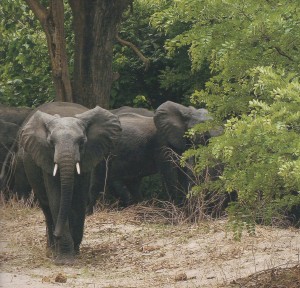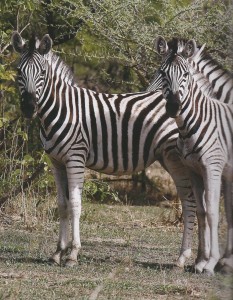“The African” takes you to Yankari National Park
The African takes you to Yankari National Park, the largest game reserve in Sub-Saharan Africa
!["THE AFRICAN" FOUNDER, PUBLISHER AND SENIOR REPORTER SOUMANOU SALIFOU (DARK CLOTHES) ENJOYS A VISIT AT THE WIKKI WARM SRING LISTENING TO THE GUIDE'S EXPLANATION. [Image by "The African"'s own senior photographer Arsene Kassegne]](http://sws2.xrto.net/wp-content/uploads/2013/11/Wikki-warm-spring1-1024x731.jpg)
By Soumanou Salifou
Yankari Game Reserve, in Northern Nigeria, is the largest game reserve in Sub- Saharan Africa. It is located at a distance of 115 kilometers from Bauchi Town, 230 kilometers from Jos (Plateau State) and 400 kilometers from Kano State, and covers an area of 2,244 square kilometers. Yankari Game Reserve was demarcated as a game reserve in 1956, but only opened to the public on December 1st, 1962. It was upgraded to the status of national park in 1991 by a federal decree. At the inception of the Mu’azu administration in 1999, the new executive initiated a process of taking back the park from the Federal Government to upgrade it to international standards. This effort culminated in the hand-over of the park to the Bauchi State Government on June 1st, 2006.
Yankari Game Reserve has five warm springs of which only one has so far been developed: the Wikki spring, the largest one, at the visitor camp. The warm spring water has been found to be potable by hydrologists. It remains constantly at 37 degrees, irrespective of theweather. Camp residents have told The African about the presumed healing virtues of the water. Visitors can enjoy the park’s many facilities and attractions. Guided game-viewing is arranged twice a day in a comfortable, high, open vehicle. There is a camping ground at the camp. The park has a museum and a conference room.
Fauna
Yankari Game Reserve has a rich variety and a large number of wild animals. These include more than 50 species of mammal, among which Anubis baboon, Patas monkey, Tantalus monkey, warthog, hippopotamus, lion, leopard, spotted hyena, striped hyena, elephant, buffalo, Roan antelope and waterbuck. Since the creation of the area as a game reserve, several species of large mammal have become locally extinct. These include: African hunting dog, cheetah, giraffe and red-fronted gazelle.
More than 350 species of birds have been recorded in the park. 130 of these are residents, 50 are Palearctic migrants, and the rest are intra-African migrants or move locally within Nigeria.
There have been little studies of fishes, amphibians, reptiles and insects, but 26 species of fish, 7 species of amphibians and 17 species of reptiles have so far been identified. Particularly, the African rock python, the Nile crocodile and the Nile monitor are quite common.
Accommodation
The park also houses several archeological, historical and cultural sites of great significance. Old iron smelting sites are found in many locations in the park. At some of these locations the smelting furnaces are still standing full height. Several abandoned village sites are found along the Yashi River in the north of the park.
Enjoy more dazzling images and find out more about Yankari National Park in The African.






